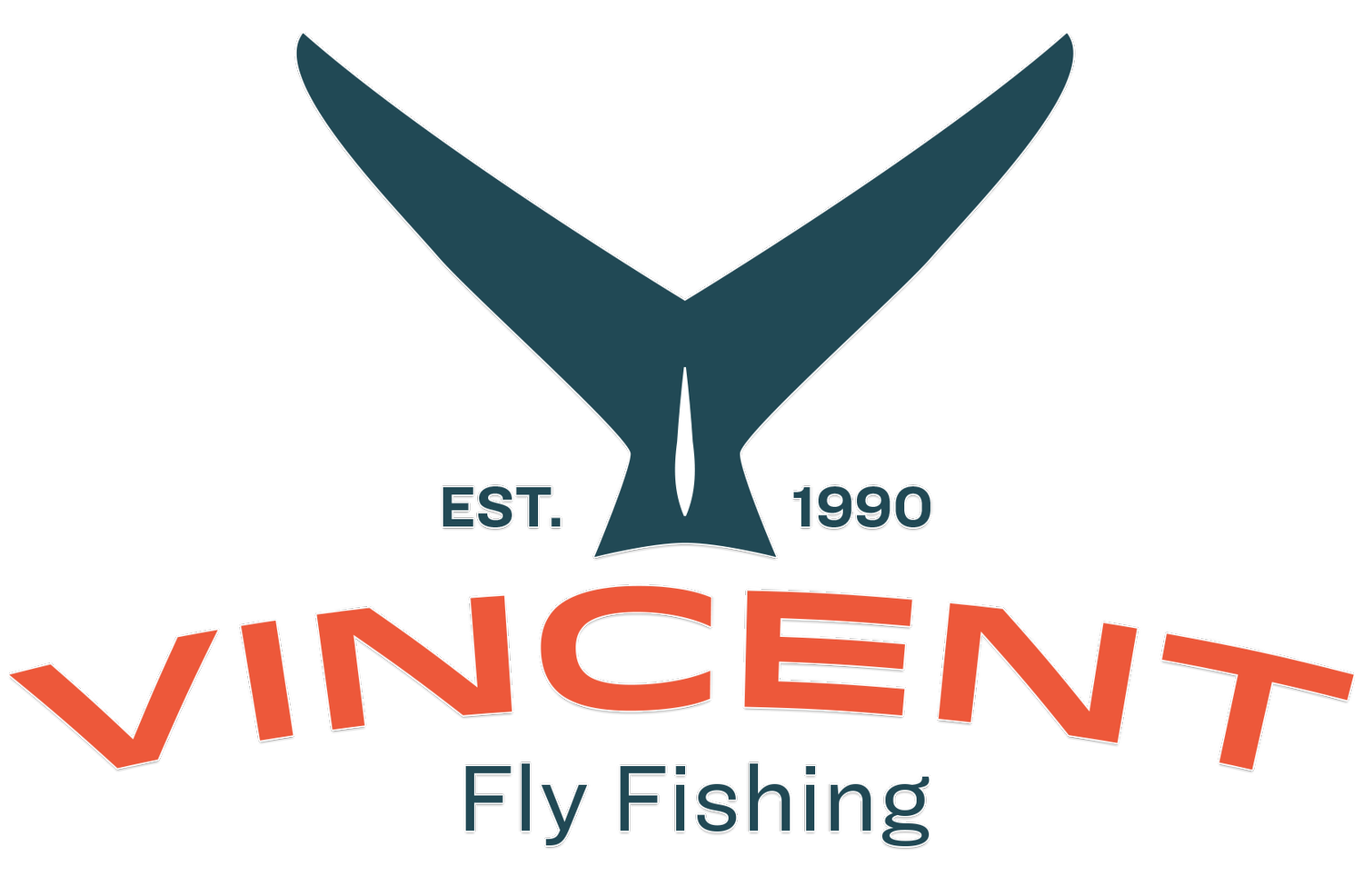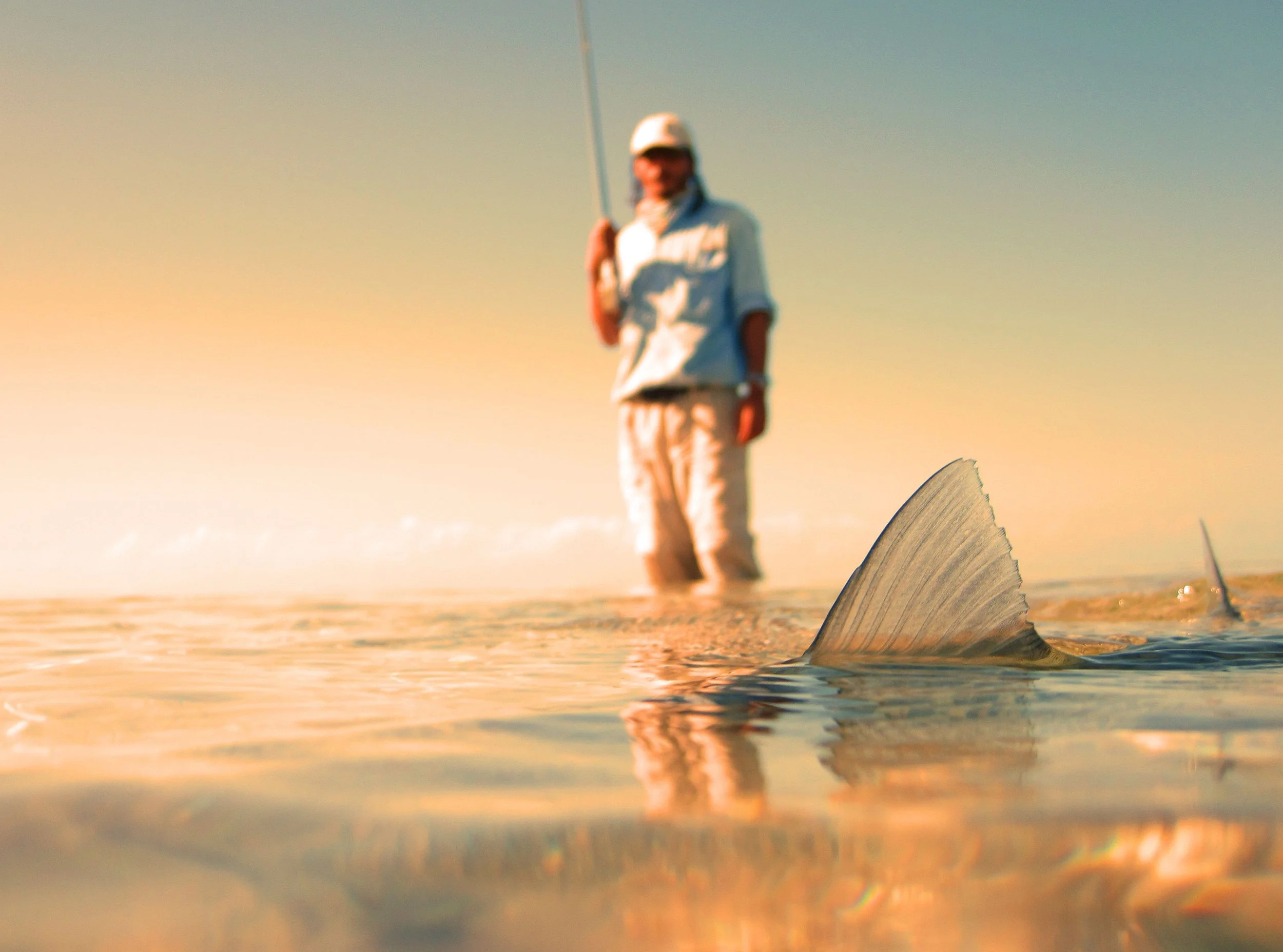The Beginners Expectation of Saltwater Fly Fishing
Fly fishing for bonefish has experienced considerable growth within the fly fishing travel industry with hundreds of new anglers annually joining this migration to the saltwater in search of what many consider to be one of the world's finest light tackle game fish. Catch and release is now the 'norm' which will ensure that this wonderful game fish is here to stay. Although numbers and size are impressive in many of the worlds locations it should not be taken for granted that those new to fly fishing can just show up and expect these fish to jump in the boat and start rummaging in your tackle bag for a fly to eat. The ' Grey ghost' is hard to see and at times even harder to catch. They were designed that way and is the main reason why this type of angling can be classed as a true sport.
Need caption and photo credit.
Like any first time attempt at something new it can often be a difficult transition to effectively apply your existing skills to the new task at hand. Combine the new 'alien' environment and technique with generally short outings of 3 to 5 days of fishing and anglers often need many, many years of experience before they really feel confident with their ability to present a fly in any type of situation. To try and successfully teach the required casting techniques in the adrenaline charged conditions immediately before presentation is almost an impossible task and at best is extremely difficult as part of an already time starved agenda. This leads to compromising short cuts in the hope of producing a few extra fish. This instant gratification process is the slippery slope in creating the proverbial ' old dog, new tricks ' angler with the old dog's learning curve leveling well before it's potential. Even when the fly has been presented the importance of of fly animation and bight detection come into play as part and parcel of a series of completely unfamiliar requirements that need to be executed in a matter of a few seconds. This can all add up to disappointments with the final results of any bonefishing trip where newcomers have often been dealt a hard and unsympathetic blow from Mr. Reality. The weather and exposure to it's full effects on the open water is another factor and anglers should remember that a nice benefiting breeze enjoyed by the experienced bonefisherman is often the reason a novice can blank for the day.
The last thing I want to get across is that fly fishing for bonefish should only be experienced by the expert caster and fisher as that is not the case. The main criteria required by any angler is nothing more than possessing the enthusiasm to experience this wonderful sport in the true traditions of fly-fishing. As long as that is what they hope to achieve then they can consider themselves qualified to do so. What I am trying to do is let those new to this sport know that they should take a moment to put everything into perspective. To get across to newcomers that fly fishing from the front of a flats skiff for bonefish is not a given and that often, success can be achieved in an environment that leans to the side of fishing and not catching. Rather than stumble along picking up a few tips here and there I think it so much more productive that a novice saltwater fly fisher arrive to our shores in a frame of mind to learn a new sport and not a heavy expectation of bending into bonefish every few minutes of the day. It's a common occurrence to have fisherman come back from the flats with tales of how slow the fishing was because the angler only landed 1 or 2 fish. You then speak to the guide whose opinion is rather different about the days fishing. The angler was presented with consistent shots for most of the day yet he missed the target or wasn't seeing the fish or he broke 4 fish off or all of the above. Had he batted 300 for example he would have had 10 fish for the day.
Often the Anglers perception of successful bonefishing is orientated almost exclusively around the cast and if the fly lands in the zone then it should be considered a caught fish. This is not the case as the 'zone' changes depending on things like water depth, the fishes speed, wave action or lack of it and fly sink rate. A fish caught 2 minutes on an exposed deeper flat edge needs a completely different approach than say, one which although on the same flat, is now on the inside in flat calm and shallow water. Fly presentation is a far more hurried affair from the front of a moving bonefishing skiff than most anglers are used to in their normal fly fishing environment and assuming that the fly has been presented in the correct position then the subtleties of fly animation and bight detection is what often turns an ordinary day into an exceptional one. Each bonefishes reaction to the fly is different and anglers can only begin to notice and understand these subtle changes after they have passed the often 'panic presentations' of their first few days or even their entire inaugural outing. An anglers success at throwing a fly at a school of 200 1 to 2 pound fish in 3 feet of water cannot hold it’s place on the ladder of success compared to a successful presentation at a pair of 'snarfling', tailing 10 pound fish in 10 inches of water. However it may only take one of the latter fish to make any anglers trip.
Creating a relaxed yet very informative stage for learning puts far less pressure on the novice fly fisherman as well as guide. Their responsiveness to their new found surrounds becomes easier to digest, creating a more confident and ultimately competent angler. Their perceptiveness becomes sharper and their learning curve accelerates more than that angler who's only bench mark for learning are those hectic moments after a fish has been spotted. We all have to learn from that situation but the angler with a calmer approach and less expectation will almost always come away with more and enjoy the moment regardless of the outcome.
Bonefishing is NOT a numbers game and every angler needs to value and appreciate the stalk as much if not more than admiring the fish that now lays exhausted in your hands and is really what this sport is all about. Without it this magnificent game fish would never hold the lore and respect that makes it such a special quarry to both novice and expert alike.

